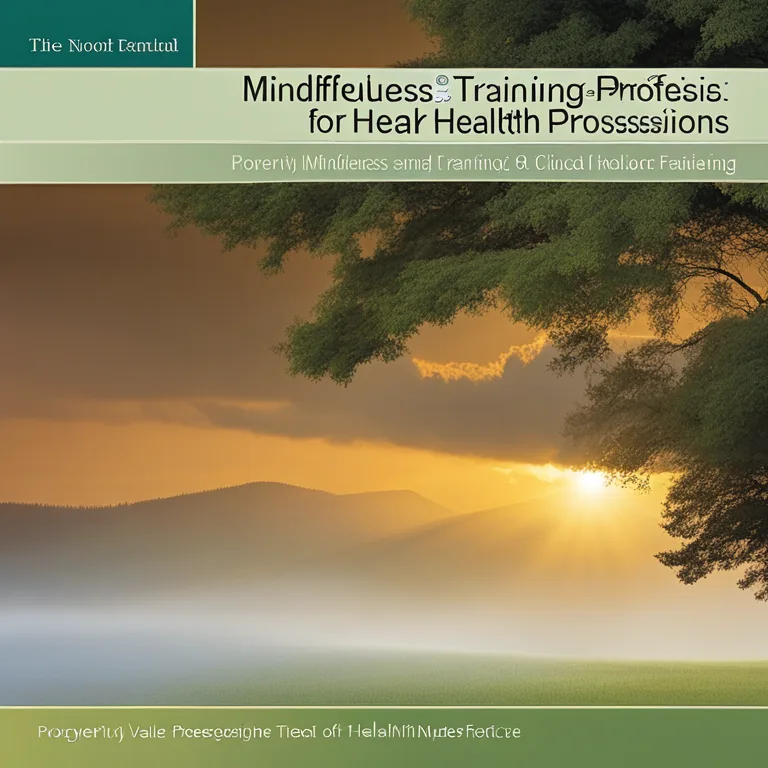
The Integration of Meditation and Mindfulness in Clinical Settings
Examining the role of meditation and mindfulness practices in enhancing patient care within clinical environments.
article by Hina Kurosawa
Mindfulness: A Clinical Revolution
Over the past decade, mindfulness and meditation have moved from the fringes to the forefront of clinical practice. These ancient practices have been studied extensively, with mounting evidence pointing to their effectiveness in managing various psychological conditions. In 2024, it is not uncommon to find mindfulness-based interventions intertwined with conventional medical treatments. Clinical mindfulness involves teaching patients how to gain awareness of their thoughts, feelings, and bodily sensations in a non-judgmental way, a proven technique to support overall well-being.

Treating Illness With Awareness
The application of meditation and mindfulness in clinical practice has gone beyond their initial scope of managing stress and anxiety. Modern day clinics regularly employ these techniques to aid in the treatment of chronic pain, depression, and even heart disease. Patients who engage in mindfulness practices report a significant reduction in symptom severity and an enhanced capacity to manage their health conditions. Moreover, the use of these methods alongside medication and therapy underlines an integrated approach to treatment in contemporary healthcare.

Training Health Professionals
Recognizing the value of mindfulness in clinical practice, many healthcare institutions have begun to offer training for professionals. This training ensures that doctors, nurses, and therapists can not only employ mindfulness techniques effectively but also guide their patients in practicing them. Properly trained staff are crucial to the successful incorporation of these practices, as they can tailor interventions to meet the unique needs of each patient and evaluate the effectiveness of the treatments.

Research-Backed Methodologies
The endorsement of meditation and mindfulness by the medical community isn’t without a solid evidence base. Clinical trials continue to shed light on the mechanisms through which mindfulness exercises exert their benefits. Studies have shown that these practices can lead to structural changes in the brain, improving areas associated with attention, emotion regulation, and pain perception. These findings have helped demystify the practices for skeptics in the medical field and have catalyzed their wider acceptance.

Challenges and Ethical Considerations
Despite the widespread adoption of mindfulness and meditation in clinical settings, challenges remain. There is a risk of commodification, where the essence of these practices is diluted to fit market demands. Ethical considerations are also paramount, as it's crucial to respect patients' cultural and religious backgrounds when introducing these practices. Clinicians are continuously working to address these issues, ensuring that mindfulness and meditation are accessible and beneficial to all patients.
Future Prospects
Looking towards the future, the integration of meditation and mindfulness into clinical practice appears poised for further growth. As digital health technologies evolve, so too do the platforms for delivering mindfulness-based therapies. Virtual reality, apps, and online programs are expanding the reach of these techniques, making them more available to individuals who may not have had access before. Overall, as understanding of their therapeutic potential deepens, meditation and mindfulness stand to redefine patient care in clinical settings even more profoundly.
Published: 1/8/2024
Modified: 1/8/2024
More predictions
Come back here soon to learn more about yourself and your future


Can Meditation Alleviate Symptoms of Depression?
Delve into the therapeutic potential of meditation for managing depression and enhancing mental well-being in this insightful article.


Meditation Basics: Tips for Inner Peace and Focus
Discover practical meditation tips and techniques to foster inner peace and enhance focus in your daily life.


Harmonize Your Spirit: Energy Meditation Techniques
Discover the serene world of energy meditation to harmonize the spirit, balance the chakras, and foster inner peace in our modern lives.